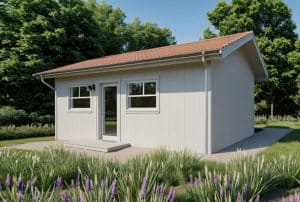





A link to download your FREE brochure will be in your inbox in 3 minutes



















The final price may vary based on project specifics.
To get a free accurate quote tailored to your needs, book a consultation with us today!

The price per square foot provided is an average and may vary depending on project-specific details such as materials, location, complexity, and other factors. Actual costs may differ from the average provided.
It is recommended to obtain a detailed quote based on the specific requirements of your project.

Please note that the monthly payment displayed on this page is an estimate and is subject to variation based on the selected loan product, applicants credit score, loan amount, and other financial details. Actual monthly payment may differ from the estimate provided.
It is recommended to seek advice from a financial advisor or loan officer to obtain precise payment information tailored to individual circumstances.
 Your Trusted
Local Contractor
Your Trusted
Local Contractor

Are you an affiliate of California homeowners, wishing to undertake your ADU soon? At present, CalHFA seeks to uplift your kindness via sponsorship.
The term grant means, simply said, some free money for ones receiving it. It’s pertinent to note that it’s a distinctly separate concept from what is known as “mortgage” and is not a loan. Such a subsidy doesn’t await any return payments, comes without interest rates, etc. It is merely some good money for an ADU project.
This CalHFA ADU grant program caters to low and moderate income people to achieve a new unit. It lifts some financial burdens off of them without downsides. The impressive sum is, obviously, not awarded as money, but as financial aid.
As with most payments, some qualifications are required and are contingent on certain demands to protect the agency from scammers looking for free cash. As an applicant, one ought to strive to achieve a qualification by a licensed approved lender to sign off the desired ADU grant.
Find further requirements below, including accessory dwelling unit criteria along with earnings limitations. Avoid discouragements. Statistics indicate that nearly everyone qualifies for the CalHFA’s ADU Grant.
ADU grants by CalHFA are an amazing opportunity that is well worth all the trouble.
Reading the text as a Californian landowner? The CalHFA grant is the chance. Luckily, it calls for just a pair of conditions to be met normally. Consult with your chosen backer to confirm the aforementioned.
Ensuing an acceptance, your residence must be concurrent with the future ADU. Should you reside on the land, whichever shall soon be considered by the appraiser, you fulfill this requirement. Unfortunately, investors who have an investment property that they want to enrich by adding an ADU are not fit for this loan.
The volume of reported earnings must fall into or under moderate or low income limits. There are income limits that are in place for the applicant.
The person who applies has to consider them, not any family member who might live on the property or the collection of them. The volumes of paid income criteria differ greatly between each county.
CalHFA is a very accessible program that makes ADU more feasible and common.
Many wannabe applicants are puzzled by the loan stipulation. You commit to attain a loan for your eligibility for this ADU grant. The desire of the grant’s founders to send aid to people who need them for their project justifies this condition.
The loan has to be included into the approved types, more on that later. It also is expected to be greenlit by a preemptively approved lending entity from CalHFA.
This loan absolutely needs to come with managed escrow. At that moment, the backer does not release the money in one big chunk but awards it in portions following each finished stage of the ADU project. The plan is managed by the bank, so it does not add any headaches for the owner.
In simpler words, it means that CalHFA will not give out loans to people who don’t have any funding or do not need help with their financial situation. This way, people who are too well off to be helped and people who are struggling and should not take on a project of this sort are both excluded from the grant’s expected pool of applicants.
Relying on the right loan, you should hope for $40000 to bring your ideas to life.

In Sacramento, the CalHFA recognizes roughly $90000 as low-income and $180000 as moderate-income limits as of 2023 standards. If you inhabit these limits, you can theoretically qualify for the ADU grant.
Imagine yourself earning, let’s say, $100000 and desiring an ADU of the same price. You seem eligible, but it seems like an impossible task considering current life expenses.
Let us entertain this hypothetical scenario. When you consider your project reparations that amount to a steep $100000, you might have it this way.
Your steps with CalHFA grant money would be:
The grant money may successfully present you with admittance to both pre-development grant money of $40000 and an actual construction loan of $60000. The undertaking is now fully paid up, and you simply commit to pay off one loan.
In the full hypothetical scenario, you spend $100000 but only owe $60000 in the end.
In the previous section, we imagined a total need of $100,000. But what if I need less, or what if I spend only, say, a quarter of this sum on preparation because I am an architect myself and do not require these many paid services?
In that case, you are allowed to put the remaining money, here it would approximate to $15000, to non-recurring closing costs. These are payments that are apprehended to be paid for only one time. They can be illustrated with loan fees, escrow fees and interest rate buydowns.
The interest rate buydown is a situation in which you pay upfront and cover discount points. In this manner, you cut down your interest rate for future payments. It is extremely beneficial. Each discount point saves you 1% of the loan.
Putting aside the buydowns, there are other potential ways of improving the loan with the remaining money. Discuss the options with professionals at A+ and your creditor.
If you require less than the grant money affords, you can, however, receive the funding for other necessities.
The grant receival pathway revolves around loaned money, but what to do when you have thus far used a fraction of your own personal funds? Unfortunately, this money cannot be returned to you via the CalHFA, so it is advisable to research before spending.
Nonetheless, hope is all the more present for you. The missing sum can be reapplied to your loan to lessen its principal. What can be concluded from the fact is that the money equaling the amount that you spend on eligible purchases can be forwarded to your loan to reduce it.
The crucial requirement is the proof of purchase. This is just another reminder for you to always conserve the receipts. When you provide the proofing certification to your lending entity, they may fund the project in this interesting way. To recapitalize, should one spend considerable money on the ADU themselves, the spender can also benefit from CalHFA.
Normally, the individual is even presumed to handle a portion of the sum themselves at the outset to later have it reimbursed. That is because some architectural planning and other details are needed to be considered originally, and these are not free. These costs can amount to thousands of dollars, so you are urged to be prepared financially.
CalHFA might reimburse the money you spent previously when certain known necessary conditions are met.
To, once again, protect themselves from freeloaders and leave more funding for honest people, the agency lists what they will be willing to sponsor. Using the grant for anything else is rigorously prohibited. The expenditures that the grant covers all fall into the pre-construction category.
Pre-construction soft costs constitute the following:
Note that construction materials are not incorporated in soft costs. You cannot spend your CalHFA grant money on buying the necessary equipment or spendable resources. All of those come from your own pocket.
Labor costs are also excluded from soft costs. Paying any contracted workers is solely your responsibility. An architect commission could be seen as an exception to that only one rule. All others are not required for pre-construction.
Besides, you possess the right to share your money between the aforementioned categories freely and at your own discretion. Some people will need more on architectural costs, while for others preparation of the site will be the most costly.
When applied legally, the grant covers almost all pre-production costs.
An applicant needs to establish a connection with the officially CalHFA-approved lender. The index of such lenders is known and limited. CalHFA provides it on its website. When you establish a connection with a creditor, he or she will reply with an estimate of your eligibility, as well as a guide to your future actions.
To kick off the conversation, prepare in advance. Consider your accessory dwelling unit project and prepare a layout, a formalistic architectural plan, an architectural design, your thoughts on commodities, the future location on given land and further elements within a multitude.
Unless you, by chance, are a representative of these esteemed professions, you will be required to commission a General contractor and an architect. Without their services, most people cannot accurately prepare for a session with the CalHFA lender.
Remember that we at A+ Construction & Remodeling in Sacramento, California, can provide you with the most professional experience.
When the plans are devised and shown to a moneylender, the specialist can predict your actual eligibility and the sum you are looking at if cleared for the desired grant. Then, the five working phases can be set into motion.
Preparation is key for a successful ADU.
To outset applying, look for a General Contractor and an Architect. You will require an appraisal and then a moneylender, and only then will you finally have your ADU team.
Making the convoluted journey more understandable, the issuing agency released a structure for the whole process.
The five phases are as follows:
Following this expected protocol guarantees the most stable and understandable experience.
Although the steps to get here are similar, the results may often vary. The firm presents a number of strategies for loaning the ADU depending on your desires. The body provides a registry of approved lenders on their website, separated by populated area centers. Each moneylender affords and favors different loan types.
Regarding primary mortgage payers, cash rewards. The primary mortgage affiliated with your primary house is replaced with a different, typically more expensive one, but the discrepancy is yours in cash. The extra cash is purported to be spent on the ADU construction.
These are specific loans that transform the physical ownership to collateral. For the HELOC option, the interest rates fluctuate. A home equity loan expects fixed payments from the applicant.
The renovation-type loan is thought to be very attractive in the ADU wannabe owners’ community. When we think of it, we usually mean the Federal National Mortgage Association or Fannie Mae loan.
It might coexist with the CalHFA ADU grant program, allowing bigger pros with financial freedom. The loan is calculated by implementing the expected monetary assessment of the house after the renovation. It is seen increasing the loan considerably.
The aforementioned three loans provide enough paths for you to embrace the one that fits your own ADU journey.
Unfortunately, some potential pitfalls present themselves regarding CalHFA’s exploitation. From the previous list of loans, one most commonly seen is the first one, which is refinancing. Refinancing exists in place for mortgage payers in need for an ADU.
At the moment a house’s mortgage expenditure is recalculated, the original low interest rate faces heightening. This basically says that although an owner gets to have their CalHFA ADU grant, as well as a trendy ADU project, they will spend excess funds in the long run. Of course, unless you want to contemplate the monetary advantages the ADU itself begs to offer.
All ADUs are a serious financial responsibility, which is made easier with CalHFA.
Absolutely never. The grant money allocated to awardees is reserved wholly with preliminary construction budgeting in mind. When awardees ignore the requirement, they face potential legal consequences over and above a loss of privileges to the agency’s services. To erect the actual unit, please use your mandatory construction loan instead.
As Sacramento is California’s geographical element, it totally participates in the described initiative. Notwithstanding, sometimes the situation secures it as impossible to receive this subsidy, and sometimes one isn’t capable of even achieving an ADU on the examined soil at all. When in doubt, reach out to professionals at A+ Construction & Remodeling in Sacramento, California.
Yes, attaining the grant money is feasible even when the ADU is canceled. Many applicants underestimate the money that goes into a whole structure of the present kind, and you cannot always account for unforeseen life circumstances. If abandonment concerns you, ensure a review of this point by your lender in advance.
Although a mortgage typically gets refinanced during enrollment for an ADU loan, variation is observed. A second-lien product allowed by a limited lineup of lenders makes the original rate remain set in place. A higher interest is still expected on the ADU-related mortgage.
Yes, a unit created within the California Housing Finance Agency program would be susceptible to taxation. Consult a competent tax professional to evaluate how it can affect your taxpayer’s situation.
Get a First Look at Real ADU Projects